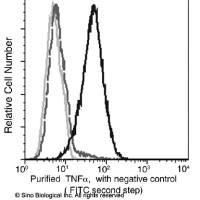Studying Wound Repair in the Mouse
互联网
- Abstract
- Table of Contents
- Materials
- Figures
- Literature Cited
Abstract
Animal models of wound healing provide vital insights into the mechanisms and pathophysiology of cutaneous wound repair and are a crucial part of clinical research into the development of new strategies and approaches to rational wound therapy. Although considerable biological variation in the wound healing response exists even among inbred animal strains, consistent surgical procedure and wound analysis can yield significant conclusions. Many different aspects of the healing process can be characterized and quantified in a reproducible, controlled environment. Here, we detail methods for full?thickness excisional and incisional wounding and for analysis of wound biopsies. Curr. Protoc. Mouse Biol . 3:171?185 © 2013 by John Wiley & Sons, Inc.
Keywords: wound repair; wound biopsy; histology; IHC; histomorphometric; wound models
Table of Contents
- Introduction
- Basic Protocol 1: Wound Healing: Full‐Thickness Excisional Wounding
- Support Protocol 1: Wound Healing: Full‐Thickness Excisional Splinted Wounds
- Support Protocol 2: Wound Healing: Incisional Wounds
- Support Protocol 3: Wound Healing: Mouse Skin Explant Ex Vivo Assay
- Basic Protocol 2: Wound Healing: Wound Isolation and Basic Immunohistochemical Analysis
- Basic Protocol 3: Histomorphometric Analysis of Wound Sections
- Reagents and Solutions
- Commentary
- Literature Cited
- Figures
- Tables
Materials
Basic Protocol 1: Wound Healing: Full‐Thickness Excisional Wounding
Materials
Support Protocol 1: Wound Healing: Full‐Thickness Excisional Splinted Wounds
Materials
Support Protocol 2: Wound Healing: Incisional Wounds
Materials
Support Protocol 3: Wound Healing: Mouse Skin Explant Ex Vivo Assay
Materials
Basic Protocol 2: Wound Healing: Wound Isolation and Basic Immunohistochemical Analysis
Materials
Basic Protocol 3: Histomorphometric Analysis of Wound Sections
Materials
|
Figures
-
Figure 1. Images of full excisional splint wounding procedure. (A‐C ) Depilation of mouse hair using rosin gum and beeswax method. (D ) Marked‐out circle on the cut site. (E ) Create an full excisional wound of 5 mm in diameter. (F ) Place and glue the splint around the wound. (G ) Cover the wound with a trimmed Tegaderm dressing. View Image -
Figure 2. Illustration of the size of the silicon splint. View Image -
Figure 3. Schematic diagram showing final view of a full thickness excisional splinted wound. View Image -
Figure 4. Immunohistochemical staining of mouse skin explant for keratin 6 after culturing for 8 days. View Image -
Figure 5. Schematic representation of the histological stained wound section with predefined labeling for measurements. View Image
Videos
Literature Cited
| Literature Cited | |
| Alonso, L. and Fuchs, E. 2006. The hair cycle. J. Cell Sci. 119:391‐393. | |
| Ansell, D.M., Kloepper, J.E., Thomason, H.A., Paus, R. and Hardman, M.J. 2011. Exploring the “hair growth‐wound healing connection”: Anagen phase promotes wound re‐epithelialization. J. Invest. Dermatol. 131:518‐528. | |
| Antal, C., Muller, S., Wendling, O., Hérault, Y., and Mark, M. 2011. Standardized post‐mortem examination and fixation procedures for mutant and treated mice. Curr. Protoc. Mouse Biol. 1:17‐53. | |
| Donovan, J. and Brown, P. 2006a. Parenteral injections. Curr. Protoc. Immunol. 73:1.6.1‐1.6.10. | |
| Donovan, J. and Brown, P. 2006b. Euthanasia. Curr. Protoc. Immunol. 73:1.8.1‐1.8.4. | |
| Galiano, R.D., Michaels, J., Dobryansky, M., Levine, J.P. and Gurtner, G.C. 2004. Quantitative and reproducible murine model of excisional wound healing. Wound Repair Regen. 12:485‐492. | |
| Kiritsy, C.P., Lynch, A.B. and Lynch, S.E. 1993. Role of growth factors in cutaneous wound healing: A review. Crit. Rev. Oral Biol. Med. 4:729‐760. | |
| Sonnemann, K.J. and Bement, W.M. 2011. Wound repair: Toward understanding and integration of single‐cell and multicellular wound responses. Annu. Rev. Cell Dev. Biol. 27:237‐263. | |
| Tan, N.S., Icre, G., Montagner, A., Bordier‐ten‐Heggeler, B., Wahli, W. and Michalik, L. 2007. The nuclear hormone receptor peroxisome proliferator‐activated receptor beta/delta potentiates cell chemotactism, polarization, and migration. Mol. Cell Biol. 27:7161‐7175. | |
| Werner, S. and Grose, R. 2003. Regulation of wound healing by growth factors and cytokines. Physiol. Rev. 83:835‐870. |









